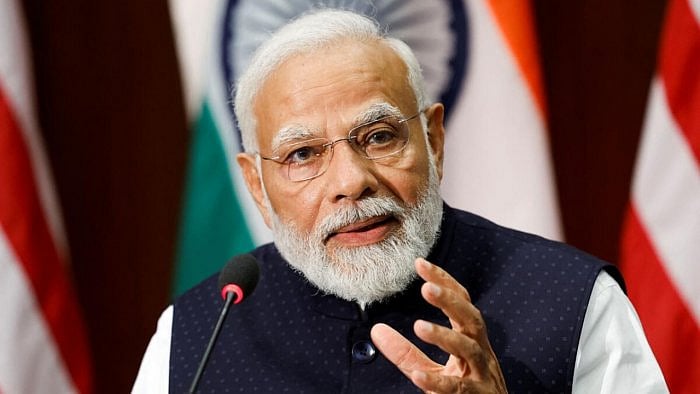
With a historic speech to the US Congress capping a state visit filled with symbolism and substance, Prime Minister Modi has practically hitched India to the American bandwagon and announced to the world that India and the US are now all but allies, with a clear message to China while also envisioning a global mission encompassing democracy, climate change, resilient supply chains, and the reform of multilateral institutions. Where previously India had, while seeking ‘strategic partnership’ with the US, hedged its bets, reflecting the ambiguity over China’s capabilities and intentions in the pre-Xi Jinping years, Modi chose to progress from “overcoming the hesitations of history” to enunciating a “calling of the century” for the India-US partnership. It reflects, on the one hand, the American urgency to rally allies and friends to deal with China’s challenge to the US-led world order and, on the other, his own predicament over the unending border stand-off in the Ladakh sector and China’s bid for hegemony in Asia.
The substance of the visit consisted in advances in the defence and aerospace relationship. With approval from the Biden administration, GE signed an agreement for HAL to manufacture F414 jet engines under licence and technology transfer to power India’s Tejas fighters. The US will also finally sell 31 armed drones, an important capability enhancer over India’s seas and on the borders with China and Pakistan. But it may well be argued that these are linear advances in the relationship. The more significant and qualitative changes come from the space and semiconductor breakthroughs. India’s decision to sign the Artemis Accords aligns its space programme closely with America for the first time in matters of space exploration and militarisation, the practical impacts being demonstrated first by India’s entry into the ageing International Space Station, training for Indian astronauts, and the US aim to return humans to the Moon this decade. Equally significant is the US decision to allow its top memory chip-maker, Micron, to set up an assembly, testing and packaging facility for memory chips in Gujarat. India will thus take a first step toward becoming a part of the global semiconductor supply chain, just as the US seeks to cut China off it. The two countries will also work together on critical and emerging technologies – AI, Quantum Computing, critical materials, telecom, etc., and, crucially, to build a “pipeline of talent for both countries” in these areas.
Also Read | US should not mistake Modi for India
These deals and agreements could have been seen as purely transactional, but for the context and meaning that Modi gave to them in his speech to the US Congress, hitting all the right notes on what President Biden must have been keen to hear – on democracy, on Russia’s invasion of Ukraine, and on China. It was on the last that he was perhaps most convincing. In his most direct challenge yet to China’s vision of the world order, Modi warned that the “dark clouds of coercion and confrontation” had gathered over the Indo-Pacific and asserted that India and the US would work together for a free and open Indo-Pacific region and to “diversify, decentralise and democratise” global supply chains. The message: India and the US are now joined together in the “defining partnership of the century” aimed at constraining, if not containing, China.
